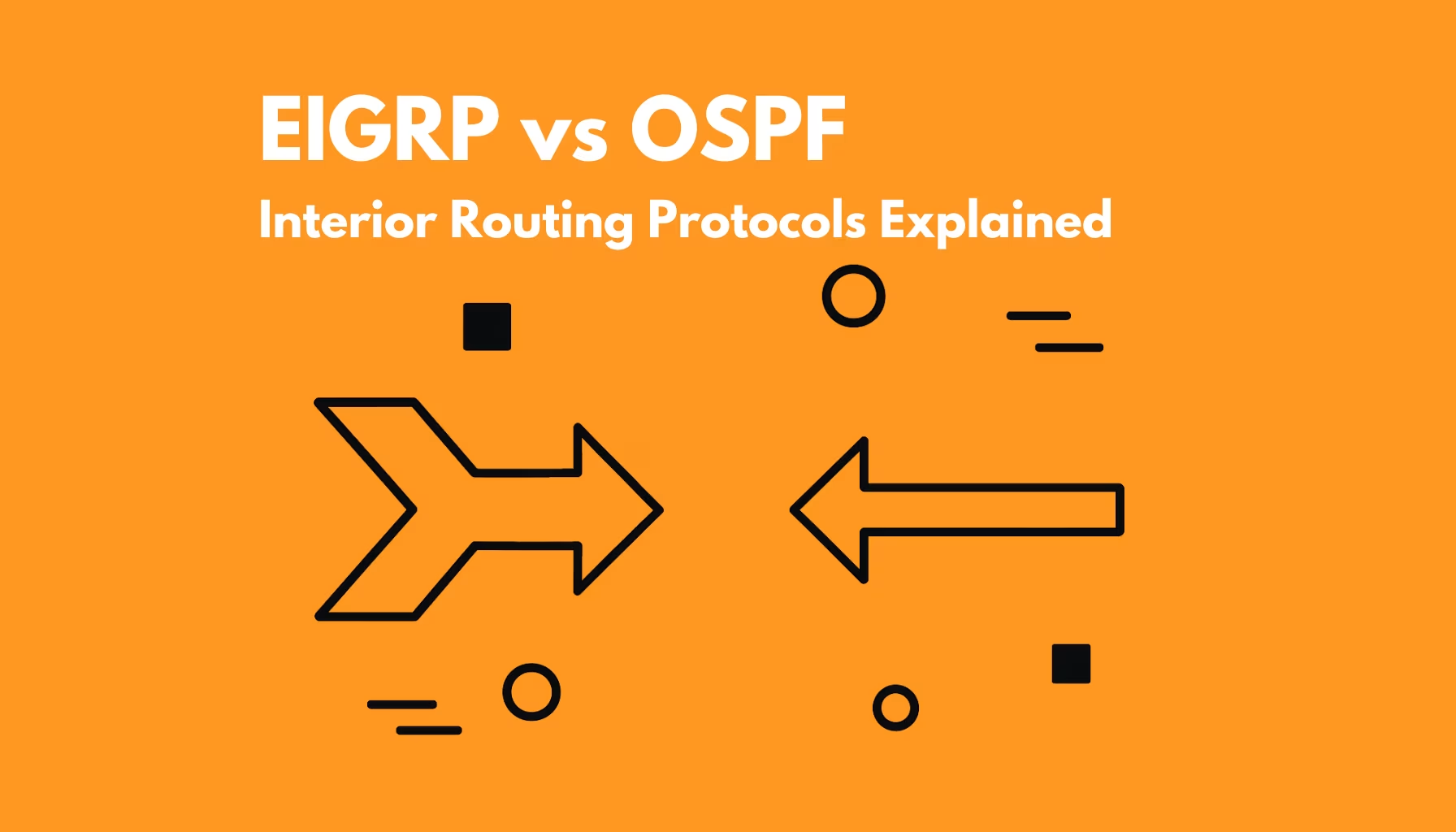EIGRP vs OSPF: Understanding the Differences in Interior Routing Protocols
Introduction
In modern networking, interior routing protocols help determine how data moves efficiently across enterprise networks. Among the most widely used are EIGRP (Enhanced Interior Gateway Routing Protocol) and OSPF (Open Shortest Path First). Understanding their differences is critical for network engineers, IT administrators, and DevOps professionals managing large, distributed environments.
In this article, we’ll compare EIGRP vs OSPF—how they work, where each protocol shines, and where their limitations start to show. Finally, we’ll explore how noBGP introduces a more modern alternative for routing workloads in multi-cloud and cloud-native environments.
What is EIGRP?
EIGRP, developed by Cisco, is a hybrid dynamic routing protocol that blends the best of distance-vector and link-state methodologies. It’s designed to provide rapid convergence and scalability within large enterprise networks—especially when running on Cisco hardware.
Key Features of EIGRP:
- Uses a DUAL (Diffusing Update Algorithm) for fast convergence
- Supports VLSM, route summarization, and load balancing
- Stores backup routes in case of failure
- Cisco proprietary (until it was later partially released as an open standard)
Benefits of EIGRP:
- Faster convergence than traditional distance-vector protocols like RIP
- Lower CPU usage compared to link-state protocols like OSPF
- Excellent for homogenous Cisco environments
What is OSPF?
OSPF is an open-standard link-state routing protocol widely used across multi-vendor networks. It organizes routers into areas to improve scalability and reduce overhead. OSPF is favored in complex enterprise and service provider networks.
Key Features of OSPF:
- Based on Dijkstra’s algorithm for shortest path calculation
- Supports hierarchical routing through Areas and Area 0 (the backbone)
- Open standard (supported by all major vendors)
- Uses LSAs (Link-State Advertisements) to maintain a full map of the network
Benefits of OSPF:
- Vendor interoperability
- Designed for large, segmented networks
- Faster convergence than older protocols like RIP
- More granular control with area-based design
EIGRP vs OSPF: Head-to-Head Comparison
| Feature |
EIGRP |
OSPF |
| Type |
Hybrid (distance-vector + link-state) |
Link-State |
| Standard |
Cisco proprietary (partially open) |
Open standard (RFC 2328) |
| Algorithm |
DUAL algorithm |
Dijkstra's algorithm |
| Metric |
Composite metric (bandwidth, delay) |
Cost (based on bandwidth) |
| Convergence Speed |
Fast |
Fast |
| Scalability |
Moderate to high |
Very high (area-based) |
| Vendor Support |
Mostly Cisco |
All major vendors |
| Resource Usage |
Lightweight |
More CPU and memory intensive |
| Configuration |
Simpler in Cisco environments |
More complex but highly flexible |
When to Use EIGRP or OSPF
Use EIGRP if:
- You operate primarily Cisco hardware
- You need faster configuration with Cisco’s CLI
- You want fast convergence without complex design
Use OSPF if:
- You need interoperability across vendors
- You’re building a scalable, hierarchical network
- You need fine-grained control over routing behavior
Limitations of Both EIGRP and OSPF
Despite their effectiveness in enterprise networking, both EIGRP and OSPF are tied to assumptions that don’t fit modern environments:
- Tight coupling with IP addressing and subnets
- These protocols rely on CIDRs, interfaces, and network boundaries that don’t adapt well to containerized or ephemeral workloads.
- Manual configuration and management overhead
- Managing Area IDs (OSPF) or AS numbers (EIGRP) requires expertise and care, especially across complex environments.
- Dependence on static topologies
- Cloud-native applications often live in dynamic infrastructures (e.g., Kubernetes, autoscaling instances) where traditional routing is brittle or slow to adapt.
- No built-in end-to-end encryption
- EIGRP and OSPF control the path, but not the privacy of your data. Encryption must be managed separately, often through IPsec or external solutions.
How noBGP Changes the Game
Today’s enterprise networks increasingly span multiple clouds, remote users, and highly dynamic workloads. These environments expose the limitations of legacy routing protocols like EIGRP and OSPF.
noBGP introduces a radically new approach:
1. Service-Level Routing
noBGP doesn’t rely on IP addresses, subnet masks, or traditional interfaces to route traffic. Instead, workloads communicate via identity-based routing, making routing independent of where a service lives or how it moves.
2. Dynamic Path Selection
Instead of manually configuring route maps and metrics, noBGP evaluates real-time conditions (latency, bandwidth, policy) to deterministically choose the best path.
3. Zero Trust, End-to-End Encryption
All traffic is encrypted end-to-end—no public IPs, no BGP exposure, no static VPNs. There is no attack surface exposed to the internet.
4. Simple, Programmatic Setup
Using noBGP, you can create a secure, private network between workloads using Infrastructure-as-Code. No need to configure routing areas, interface types, or timers.
Summary: noBGP vs Traditional Routing
| Capability |
EIGRP / OSPF |
noBGP |
| Routing Mechanism |
Topology- and CIDR-based |
Identity-based |
| Encryption |
External solution required |
Built-in end-to-end encryption |
| Cloud-Native Compatibility |
Limited |
Designed for cloud & containers |
| Public Exposure |
Requires IP visibility |
No public IPs exposed |
| Multi-Cloud Support |
Requires complex VPNs or peering |
Native, seamless |
| Setup Time |
Manual, time-consuming |
Programmatic, minutes |
Final Thoughts
Both EIGRP and OSPF have served as the backbone of interior routing for decades. They were built for static, on-premises environments where IP-based addressing and manual configuration made sense.
But in a world of dynamic microservices, remote teams, and multi-cloud architectures, they fall short.
noBGP offers a fresh alternative:
- Private by design
- Programmable from the start
- Deterministic in delivery
- Built for modern workloads
Whether you’re running across AWS, Azure, on-prem, or Kubernetes, noBGP eliminates the need for complex route tables and subnet coordination. The result is faster, more secure, and radically simpler networking.
Choose your path—because the old ones weren’t built for now.
